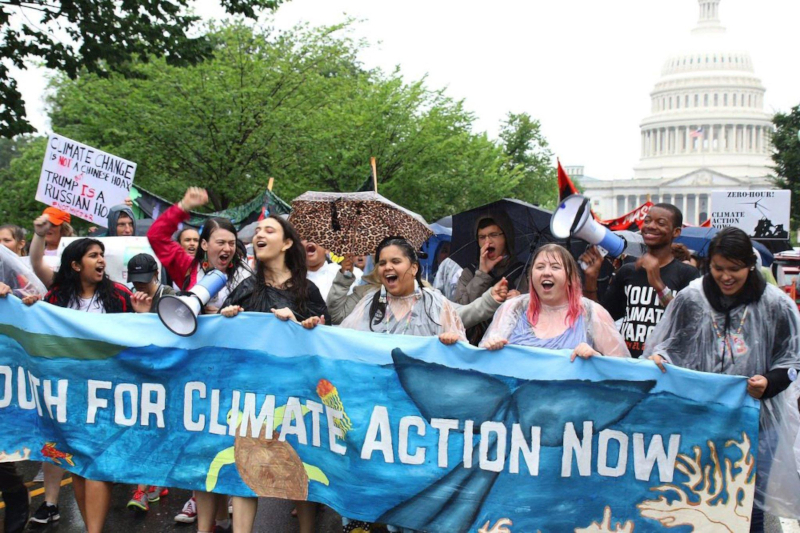After three devastating hurricanes (Harvey, Irma, and Maria) flooded homes and destroyed roads in countries around the Caribbean Sea in the summer of 2017, 14-year-old Jamie Margolin knew she had to take action As a resident of Seattle, Margolin was thousands of miles away from the storms, physically speaking, but she knew that humanity was only generations away from this type of weather becoming just as common as a cloudy day. Margolin then wrote and published an essay that argued for an end to the status quo of inaction in Teen Ink’s monthly magazine. The article attracted the attention of a few similarly-minded teens who, along with others that Margolin met at a Princeton University summer program, joined together to create Zero Hour.
Zero Hour is not the only organization that encourages youth to advocate for climate action; it has a similar mission to the US Youth Climate Strike, Earth Guardians, Fridays for Future, and the Sunrise Movement, among others. However, each group approaches the issue and its possible solutions in a slightly different way. Zero Hour has marched on the National Mall (July 2018), hosted an art festival (July 2018), and trained hundreds of teens to fight for climate action at a Florida summit (July 2019). They have almost four dozen chapters in countries around the world, from the United Arab Emirates to Fiji, and 43 partner organizations. It’s a successful nonprofit by any standards that is made even more impressive by the fact that its founders were all in their mid-teens when Zero Hour launched.
“Politicians would rather turn a blind eye and pretend it doesn’t exist,” Margolin said of the climate crisis last year. She and her fellow directors created a platform that calls on elected officials to recognize that climate change is reducing biodiversity, air and water quality, and economic opportunities now, despite some adults’ attitude that it’s a problem for the future. Nadia Nazar, another of Zero Hour’s founders, said in 2018 that adults usually dismiss the severity of the problem when teens confront them about it: “They’re like ‘Ha ha, that’s so funny. It’s not something we’ll have to deal with. Oh, yeah, the polar bears will just die, the seas will just rise.’ They don’t understand the actual caliber of the destruction.”
Journalists have profiled members of Zero Hour in prominent outlets like the New York Times, Teen Vogue, ABC News, and many more. Margolin has testified to two of the U.S.’s House of Representatives subcommittees alongside Greta Thunberg, shaming representatives for failing to act in order to “save life as we know it”. Climate scientists believe that policy needs to change today to reverse Earth’s warming so that the average global temperature does not rise by 2°C — if reached, that metric would signal a key turning point in Earth’s weather patterns.
The COVID-19 pandemic has stopped in-person gatherings, but not Zero Hour’s activism. Margolin and her fellow organizers are “still hustling”, she said in the spring of 2020, “just inside and in baggier clothes”. They used Zoom before lockdown began as a way to communicate, since their directors all live in different places. In Nov. 2020, Zero Hour partnered with the National Children’s Campaign to hold an online rally where young activists and their supporters spoke about the importance of voting. The two organizations aimed to encourage high school and college students, an age group with relatively low voter turnout, to take action because of an issue that is near universally important for Generation Z. Zero Hour is currently planning “Zero Hour 101”, a series of workshops that aims to teach interested teens about how to operate a nonprofit organization.
Zero Hour continues to plan events, apply for grants, speak at conferences, and petition elected officials during a catastrophic pandemic and worldwide economic recession because the climate crisis is still as urgent as ever. In Margolin’s opinion, “There’s no guaranteed tomorrow” unless young people unite for political action to combat the climate crisis

